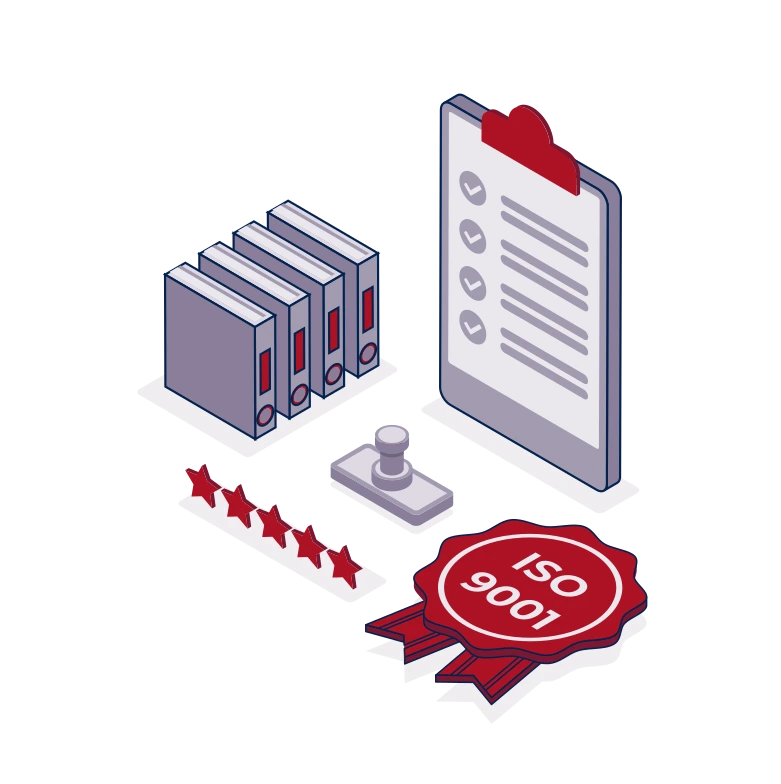Freight Shipping between Qatar and Singapore | Rates – Transit times – Duties and Taxes
Fancy a camel ride from Qatar to Singapore? Sadly, that would make your shipping incredibly slow and not so cost-effective! The real pains of shipping lie in decoding the rates, figuring out transit times, and grappling with customs regulations. But don't fret; this guide is here to light up the path, showing you the ins and outs of transport options, be it by air, sea, or land, alongside valuable advice for businesses in understanding customs clearance, duties, and taxes. So whether you're a startup deciding on your first shipment or an established enterprise optimizing your logistics, this guide is your reliable compass. If the process still feels overwhelming, let DocShipper handle it for you! We are an international freight forwarder that ensures smooth sailing of your goods, turning shipping challenges into business success.
Which are the different modes of transportation between Qatar and Singapore?
Choosing the optimal method for shipping goods from Qatar to Singapore can be quite the conundrum. Both situated within Asia, yet separated by a wide expanse of land and sea, road and rail transport might present challenges. Given their relative positions, you may feel like a chess player planning the perfect move. Picture air freight as your agile knight, swift over any obstacle; whilst sea freight could be the queen, slower but capable of moving the heaviest cargo. Your choice rides on matching your business needs with each mode's unique advantages. Stay tuned for our detailed discussion on these transport methods.
Need help with your shipment?
Need assistance with your shipment? Dont hesitate to contact us even for a simple question. Choose the option that suits you
Live chat with an expert Chat on WhatsApp Free Quote 24hHow can DocShipper help you

Sea freight between Qatar and Singapore
Qatar and Singapore, two bustling trade hubs, are woven together by voluminous sea routes that connect vital ports and prolific industrial zones. This extensive maritime network is crucial for the transport of high-volume goods, making ocean shipping a preferred, cost-effective solution. Maritime terminals like Doha Port in Qatar and the Port of Singapore form vital arteries for this labyrinth of trade. However, the journey isn’t always smooth sailing. The shipping process between these nations can turn into a labyrinth of complexities for shippers and businesses, with paperwork, customs regulations, and logistics often becoming headache-inducers. Fear not, we’ll delve into the best practices and specifics that can streamline your ocean shipping journey. It’s about turning what appears to be a treacherous sea into a calm shipping lane. The goal? Helping you chart a smoother course for your cargo’s journey from Qatar to Singapore and vice versa. No more navigating through murky shipping waters – pardon the pun! Let’s sail in.
Main shipping ports in Qatar
Hamad Port
Location and Volume: Located in Mesaieed, the Hamad Port, is essential for its strategic location that facilitates quick and efficient trade with both the Middle East and global markets. It has a shipping volume of over 1.27 million TEU.
Key Trading Partners and Strategic Importance: Key trading partners include India, China, the U.S, and the Gulf Cooperation Council Countries. Its strategic importance is found in its high-tech facilities, accommodating some of the world’s largest vessels and sophisticated capacity for handling various types of cargo, including livestock and military equipment.
Context for Businesses: If you’re looking to tap into markets in Asia and North America, Hamad Port may be an ideal fit in your logistics chain, given its advanced container handling services and connections with over seventy international ports.
Ruwais Port
Location and Volume: Situated in the northern area of Qatar along the Arabian Gulf, Ruwais Port accounts for a significant portion of Qatar’s trade. Its smaller size compared to Hamad makes it less trafficked and often more efficient.
Key Trading Partners and Strategic Importance: Trading partners include India, Iran, and others in the Gulf region. Besides, Ruwais Port is vital for local and regional trading and fishermen, also accommodating smaller size shipments which could be a strategic advantage for SMEs.
Context for Businesses: For businesses looking to ship smaller volumes or engage in regional trade, especially within Iran and India, Ruwais Port’s less trafficked location and versatile facilities may make it an advantageous choice.
Doha Port
Location and Volume: Located in the heart of Doha, this port isn’t a high-volume container hub but offers specialized services like passenger ship and cruise vessel berthing.
Key Trading Partners and Strategic Importance: As a touristic location, it indirectly contributes to the Qatari economy by promoting tourism and cultural exchange.
Context for Businesses: If your shipping strategy involves less traditional cargo such as passenger ships or cruise vessels, or if public relation value and brand image play significant roles in your business model, Doha Port and its central location and touristic significance may be of interest.
Though Qatar’s port system isn’t as varied as larger countries, the diverse offerings of these ports and the strategic advantages they each offer can be harnessed to form a powerful shipping strategy.
Context for Businesses: If your shipping strategy involves less traditional cargo such as passenger ships or cruise vessels, or if public relation value and brand image play significant roles in your business model, Doha Port and its central location and touristic significance may be of interest.
Though Qatar’s port system isn’t as varied as larger countries, the diverse offerings of these ports and the strategic advantages they each offer can be harnessed to form a powerful shipping strategy.
Should I choose FCL or LCL when shipping between Qatar and Singapore?
Choosing between consolidation (LCL) and a full container (FCL)? It’s no small decision when shipping between Qatar and Singapore. Selecting the right sea freight option can dramatically shift cost and delivery time, profoundly affecting the outcome of your logistics process. This guide throws anchor here, dissecting FCL and LCL for those setting sail for informed shipping decisions. Buckle in as we delve into differences and help chart your trade route to success!
Full container load (FCL)
Definition:FCL or Full Container Load shipping refers to a shipping method where one consignor books the entirety of a container to transport goods. This exclusivity ensures complete control over the container, ideal for safe and secure transportation.
When to Use:An FCL container should be your option when cargo volume exceeds 13 to 15 CBM (Cubic Meters). This strategy leverages the advantages of bulk transport, which invariably reduces the cost per unit shipped. Also, FCL shipping promises more safety because the container remains sealed from origin to destination, lessening the chance of damage.
Example:Consider a manufacturer in Qatar, shipping heavy industrial machinery to Singapore that fills more than half of a 40'ft container. Opting for FCL over LCL (Less than Container Load) would not only be economical but also ensures lesser movement during transit, thereby lowering the possibility of damage.
Cost Implications:While the upfront fcl shipping quote might seem steep compared to LCL, remember that shipping prices decrease on a per unit basis as volume increases. Shipping via a 20'ft or 40'ft FCL container can definitely lead to significant savings in high-volume scenarios, making it a great choice for large shipments.
Less container load (LCL)
Definition: Less Container Load (LCL) shipping is a method of freight transport that combines shipments from multiple customers in a single container.
When to Use: It's a flexible and cost-effective option for low-volume shipments that don't require a whole container, typically less than 13/14/15 cubic meters (CBM). If you're shipping a few pallets of goods between Qatar and Singapore, for instance, LCL shipment is probably your best bet.
Example: Consider a business shipping 10 CBM of electronics. Booking a whole 20-foot container might be overkill. Instead, they can use LCL freight to share space and reduce costs, while still ensuring the timely and safe delivery of their items.
Cost Implications: The advantage of LCL lies in its pricing. You only pay for the volume you use, making it a more affordable option for smaller loads. However, it could include some extra fees like the LCL handling fees at the destination port, so it's essential to get an LCL shipping quote upfront to understand all the associated costs.
Hassle-free shipping
Choosing between consolidation and a full container for shipping between Qatar and Singapore? Let DocShipper's ocean freight specialists guide your decision. Our team simplifies cargo shipping by examining factors like volume, cost, and time sensitivity, ensuring your business picks the optimal choice. Trust us to make your international trade endeavor as smooth as possible. Ready to move forward? Get a free estimate from DocShipper today.
The average sea freight shipping time between Qatar and Singapore varies significantly depending on several factors. These include the specific departure and arrival ports used, the weight, and the nature of the goods being transported. To get the most accurate cost estimate and transit time for your specific shipment, we highly recommend contacting a trusted freight forwarder such as DocShipper for a personalized quote.
Table: Average Sea Freight Transit Times
| Departure Port (Qatar) | Arrival Port (Singapore) | Average Transit Time (Days) |
| Port of Hamad | Port of Singapore | 18 |
| Port of Ras Laffan | Port of Singapore | 19 |
| Port of Mesaieed | Port of Singapore | 18 |
| Port of Al Wakrah | Port of Singapore | 18 |
*Note: The transit times shown are average estimates and may vary. For precise times, please reach out to your freight forwarder.
How much does it cost to ship a container between Qatar and Singapore?
Understanding shipping costs between Qatar and Singapore can be a bit of a puzzle. Prices per CBM vary widely due to several factors – your Points of Loading and Destination, the carrier you’ve chosen, the nature of your cargo, and unpredictable market fluctuations. That’s where ocean freight rates come into play. However, pinpointing an exact shipping cost on this one-way route isn’t feasible due to these variables. But don’t fret, our seasoned shipping specialists are here to unscramble the complexity. We evaluate each job on an individual basis to secure the best possible rates, tailored to your unique needs. Your next step? Reach out and let’s shake the moving mountains together.
Special transportation services
Out of Gauge (OOG) Container
Definition: An OOG container is specifically designed to transport outsized or over-heightened goods that don’t fit into a traditional container.
Suitable for: This is ideal for large machinery, construction material, or art sculptures exceeding standard dimensions.
Examples: Drilling equipment, construction steel beams, or a large statue could be shipped in an OOG container.
Why it might be the best choice for you: If your business deals with item dimensions exceeding the regular container scope, using an Out of gauge cargo service will ensure safe and secure transportation from Qatar to Singapore.
Break Bulk
Definition: Break bulk refers to the shipping of goods individually, skid-mounted, or on pallets, which are not containerized.
Suitable for: Break bulk is apt for heavy industries like construction and oil & gas where high-volume machinery and spare parts are shipped.
Examples: Turbines for wind farms, generators for power stations, or oil rig parts could be transported as break bulk.
Why it might be the best choice for you: If your cargo does not fit into a container or is too heavy, break bulk could be your ideal shipping method, facilitating the loose cargo load to accommodate individual item’s sizes.
Dry Bulk
Definition: Dry bulk involves goods like grains or coal that are packed in bulk without any packaging.
Suitable for: Commodities businesses dealing in agriculture, mining or construction materials, would find dry bulk shipping the most apt.
Examples: Grains, ores, or aggregate could fit snugly into this shipping category.
Why it might be the best choice for you: If you specialize in the transportation of unpackaged, loose commodities in high volumes, then dry bulk could be your best bet.
Roll-on/Roll-off (Ro-Ro)
Definition: Ro-Ro includes the shipment of wheeled cargo, which rolls on and off the ro-ro vessel on its wheels, without cranes.
Suitable for: It is the method of choice for businesses involved in automobile manufacturing, agriculture equipment, or construction machinery that can move on wheels.
Examples: Cars, tractors, or cranes would be ideal for Roll-on/Roll-off shipping.
Why it might be the best choice for you: If your business involves wheeled cargo and you’re looking to cut down on loading and unloading times, Ro-Ro could be the perfect solution.
Reefer Containers
Definition: Reefer containers are refrigerated containers conditioned to maintain temperature range for transporting perishable goods.
Suitable for: Ideal for businesses in the food and beverage, pharmaceutical, or floral industry where temperature control is key.
Examples: Seafood, fruits & vegetables, or lifesaving drugs can be transported in these refrigerated containers.
Why it might be the best choice for you: If your business deals with temperature-sensitive cargo, reefer containers will ensure the cargo remains within the prescribed temperature from Qatar to Singapore.
Each shipment is unique and choosing the right type of sea freight shipping is essential for your business. DocShipper understands that and strives to provide the best suitable freight solutions. Contact us today for a free shipping quote, designed for your business needs within 24h.
Air freight between Qatar and Singapore
When getting goods from Qatar to Singapore pronto, air freight is your trusty escort. It’s agile, reliable, and surprisingly penny-wise for petite, pricey parcels. Imagine getting your high-fashion garments or cutting-edge electronics to their destination in record speed! But, if it’s roses all the way? Not quite. Overlooking potent details can bomb your budget. Your cargo’s billable weight might hold surprises or unknown best practices can secretly bleed your wallet – these hiccups can kick your costs into the sky. Coming up, we will unravel these missteps so you won’t have to foot unnecessarily hefty bills.
Air Cargo vs Express Air Freight: How should I ship?
Choosing between Air Cargo and Express Air Freight for your Qatar-to-Singapore shipments can be a head-scratcher. Let’s break it down; think of Air Cargo as hitching a ride on a commercial passenger flight, while Express Air Freight is like having your own private jet for your goods. This guide is aimed at helping you make that crucial call, ensuring your business’s unique needs are met swiftly and cost-effectively.
Should I choose Air Cargo between Qatar and Singapore?
Choosing air cargo between Qatar and Singapore could align perfectly with your business needs, particularly if your shipment weighs 100/150 kg (220/330 lbs) or more. Major carriers like Qatar Airways Cargo and Singapore Airlines Cargo provide reliable and cost-effective freight services. However, anticipate longer transit times due to fixed flight schedules. Invest your resources smartly on air cargo for a budget-friendly yet highly efficient freight solution.

Should I choose Express Air Freight between Qatar and Singapore?
Opting for express air freight could be your best bet when shipping smaller loads, say, under 1 CBM or within 100/150 kg (220/330 lbs). This highly specialized service leverages dedicated cargo planes – sans passengers – ensuring your goods swiftly travel from Qatar to Singapore. International express couriers like FedEx, UPS, or DHL offer such services, renowned for speedy delivery and unrivaled reliability. So, if you’re keen on minimizing transit time and safeguarding fragile or high-value items, express air freight might be the perfect fit for your business needs.

Main international airports in Qatar
Hamad International Airport
Cargo Volume: Hamad International Airport is a central hub with over 2.2 million tons of cargo shipments processed annually.
Key Trading Partners: Its key trading partners include key economic powerhouses like China, India, the United States, Germany, and the UAE.
Strategic Importance: Given its strategic geographic location, airlines from Europe, Central Asia, and the Far East frequently use it as a hub. It’s particularly crucial for flights between Asia and Europe.
Notable Features: This airport is equipped with two cargo terminals that provide an infrastructure capable of handling a large volume of cargo – including fragile or valuable goods. It hosts one of the largest growing airlines, Qatar Airways.
For Your Business: If your strategy involves large-volume shipping or goods needing special care, Hamad is the right choice. It can also be an effective hub if your supply chain involves links in the East, West, and Central Asia.
Doha International Airport
Cargo Volume: While less busy than Hamad, Doha International still handles a considerable volume of cargo traffic annually.
Key Trading Partners: Like Hamad, key trading partners are the same global influences, such as China, India, the USA, and Germany.
Strategic Importance: This airport serves as a backup to Hamad and is strategically important for local and regional cargo transfers.
Notable Features: Doha International is known for its efficient administrative procedures and its ability to handle a variety of cargo types.
For Your Business: If your shipping needs are more local or regional, or if you benefit from flexibility in administrative procedures, Doha International can be a valuable asset in your logistics strategy. Though smaller than Hamad, it can serve as a reliable fallback and provide a strategic backup plan.
Main international airports in Singapore
Changi International Airport
Cargo Volume: Changi Airport, commonly known as Changi Airfreight Centre, boasts an impressive cargo throughput that reached 2.01 million tonnes in 2019.
Key Trading Partners: Key trading partners include China, Australia, the United States, and many European countries. Shipments mostly include machinery, electronics, and pharmaceuticals.
Strategic Importance: Changi Airport’s location is vital. It is an important hub in Southeast Asia due to its geography, making it attractive for connecting flights and multi-modal shipping requirements.
Notable Features: This airport notably features a Free Trade Zone where goods can be stored without being subject to GST. Further, Changi has dedicated cool-chain facilities notably for pharmaceuticals, an important aspect for businesses dealing in temperature-sensitive goods.
For Your Business: Changi’s extensive reach of over 200 destinations could play an integral role in your supply chain. The various facilities, including storage and transshipment services, can help you reach key markets in Asia and beyond efficiently.
Seletar International Airport
Cargo Volume: While the Seletar airport is much smaller than Changi, it plays a crucial role in special freight items, responsible for a considerable volume of non-standard freight.
Key Trading Partners: As a specialized cargo hub, Seletar caters to unique freight needs. While not the epicenter of mass cargo movement, it manages critical cargo flights across several countries.
Strategic Importance: Primarily handling non-passenger flights, Seletar alleviates the freight load from Changi, specifically serving ad-hoc, maintenance, repair, and overhaul (MRO) flights, thus presenting an alternative gateway into Singapore.
Notable Features: Seletar is particularly noted for its aerospace park – a facility designed to support MRO activities. This focuses on high-value, low-volume goods.
For Your Business: If your business involves shipping non-standard or specialized cargo items, Seletar offers a strategic advantage. The dedicated aerospace park may prove ideal for MRO-related shipments or high-value goods.
How long does air freight take between Qatar and Singapore?
Transit time for air freight from Qatar to Singapore typically ranges between 1 to 3 days. However, it’s crucial to remember that this duration varies based on a host of factors like the specific airports involved, the weight of your shipment, and the nature of goods being transported. For precise and fully personalized transit times, considering all these factors, it’s always a wise move to consult a freight forwarder like DocShipper.
How much does it cost to ship a parcel between Qatar and Singapore with air freight?
Air freight charges between Qatar and Singapore can average from USD 2-3 per kg. However, a precise cost can’t be guaranteed as it’s affected by variables such as the distance from airport departure to arrival, parcel dimensions and weight, and the nature of goods. Rest assured, our team is committed to providing bespoke services and we quote on a case-by-case basis, ensuring you receive the best rates fit for your needs. Reach out to us – we’re ready to deliver a free, no obligation quote within 24 hours for your specific shipping requirements.
What is the difference between volumetric and gross weight?
Gross weight refers to the total weight of a shipment, including the goods, packaging, pallets, or containers. Think of it as the scale’s reading when you place your entire cargo on it.
On the other hand, volumetric weight, also known as dimensional weight, doesn’t just consider the weight but also the space your shipment occupies in an aircraft. It’s a calculated weight based on the volume of your cargo.
Calculating the gross weight in Air cargo is straightforward. Measure the full weight of your shipment – goods, packaging, pallets, everything – in kilograms. For instance, if your cargo, including all packaging, weighs 500 kg, that’s your gross weight (1,102 lbs).
Calculating volumetric weight requires a tad more effort. In air cargo shipping, the formula is Length x Width x Height (in cm) / 6000. For Express Air Freight services, the method is slightly different: Length x Width x Height(in cm) / 5000. If you’re shipping a box with dimensions 100cm x 100cm x 100cm using Air cargo, you’d calculate 1,000,000/6000 for a volumetric weight of about 167 kg (368 lbs). The same box in an express service equates to 1,000,000/5000 or 200 kg (440 lbs).
Why bother with all this math? Because freight charges are impacted by it. Carriers will calculate both weights and charge based on whichever is higher. This ensures they’re compensated fairly not only for the weight but also for the space the cargo occupies. Therefore, understanding and calculating these weights allows you to better predict your shipping charges.

Door to door between Qatar and Singapore
Think of Door to Door shipping as your hassle-free solution for international freight. When shipping goods from Qatar to Singapore, this method handles everything from pickup to delivery efficiently and securely. It simplifies logistics, saves time, and lets you focus on other business matters. So, eager to sidestep complex shipping procedures? Let’s dive into the benefits of Door to Door shipping!
Overview – Door to Door
Dealing with the complexities of shipping from Qatar to Singapore? Door to door service is your stress-free ticket. This all-inclusive solution handles all logistics from initial pickup to final drop-off, making it a favorite among DocShipper’s clients. While it’s not the cheapest, the ease it provides is unrivaled. You won’t face the hassle of customs clearance, transportation, or dealing with import and export laws. But remember, not every shipment is the same and specific restrictions may apply – that’s when a customized solution comes into play. Give it a shot for an easier shipping experience!
Why should I use a Door to Door service between Qatar and Singapore?
Ever dreamt of a logistics fairy who could just whisk your cargo from Qatar to Singapore effortlessly? Well, that’s pretty much what Door to Door service is! Here are five reasons why you might hire this logistics superhero for your next shipment.
1. Less Stress: Just like ordering takeout, Door to Door service picks up your goods from your location and delivers them directly to the destination. This saves you from the hassle of arranging multiple transportation channels.
2. Timely Delivery: When you’re racing against the clock, every second count. With the combined speed of air freight for urgent shipments and reliable tracking systems, Door to Door service ensures punctual deliveries.
3. Expert Handling: Have complex cargo that needs specialized care? Fear not! Door to Door service providers are well-equipped to handle fragile or oversized goods, keeping them safe and secure throughout their journey.
4. Hassle-Free Trucking: With this service, there’s no need to coordinate with different trucking companies for pickup and delivery. The service handles it all, offering a streamlined experience from start to finish.
5. Convenience: The beauty of Door to Door service lies in its convenience. It takes care of everything from customs clearance to administrative procedures, so you can focus on your business, not your cargo.
So why not simplify your logistics and choose Door to Door service? Your cargo will practically feel like it’s traveling first class from Qatar to Singapore!
DocShipper – Door to Door specialist between Qatar and Singapore
Experience the ease of shipping with DocShipper! Let us manage your door-to-door delivery between Qatar and Singapore, ensuring a hassle-free, end-to-end service. From packing to transportation, customs clearance to delivery, we cover it all. Our team of experts, well-versed in all shipping methods, makes your shipping process smooth and stress-free. To top it off, a dedicated Account Executive will be at your service throughout. Contact us for a free estimate in less than 24 hours or consult with us for free!
Customs clearance in Singapore for goods imported from Qatar
Customs clearance is an integral and often convoluted part of importing goods, particularly when moving merchandise from Qatar to Singapore. It involves tricky elements such as taxes, fees, quotas, and licenses, each having its nuances. Bungling these processes can spell trouble, from surprise charges to your shipment held-up at customs, disrupting your business operations. Familiarizing yourself with these intricacies is crucial, and DocShipper is here to guide you! Our following sections will detail each step of the customs clearance process. DocShipper is available to assist you globally, with any kind of goods. Need an estimate for your project? Contact us with your goods’ origin, their value, and the HS code – these three pieces of information are essential to progress with the estimation. So, let’s dive in and decode the process together!
How to calculate duties & taxes when importing from Qatar to Singapore?
The nitty-gritty of International trade calls for not just an understanding of how to transport goods but also astute knowledge of import duties and taxes. When importing from Qatar to Singapore, a few key elements play a pivotal role in calculation of customs duties. These include the country of origin, the Harmonized System (HS) code, the Customs Value based on the valuation method allowed by Singapore customs, the applicable tariff rate, and other specific taxes and fees that might apply to the product.
But before you dive into the complex world of duties and taxes estimation, the adventure begins right at the factory floor! The very first step hinges on identifying the country where the goods were manufactured or produced, laying the groundwork for the rest of the process.
Step 1 – Identify the Country of Origin
Identifying the country of origin might seem like an obvious step, but it can drastically influence your import duties and taxes from Qatar to Singapore. Here’s why you need to be certain:
1. Different countries, various rules: Different nation’s goods face unique import restrictions which could affect your shipment.
2. Better tax breaks: Singapore has trade agreements with Qatar, which can significantly reduce your import taxes.
3. Precise HS code: An accurate country of origin helps you obtain the most suitable Harmonized System (HS) code, a key for calculating duties.
4. Detailed paperwork: Precise information helps avoid potential hiccups in the customs clearance process.
5. Fines and delays: Incorrect details can lead to fines, or worse, delayed shipments.
Remember, Qatar and Singapore are part of several bilateral and free trade agreements – such as the GCC-Singapore FTA – which might give you reduced or even eliminated tariffs. But bear in mind, you need specific documentation to prove the origin. Be aware of import restrictions too. For example, Singapore restricts certain high-risk food products. You need detailed knowledge to ensure your goods take the best path to their destination. So arm yourself with the right information and breeze through the import process.
Step 2 – Find the HS Code of your product
The Harmonized System (HS) Code is a standardized numerical methodology for classifying traded products. It’s recognized and used by more than 200 countries around the world as a basis for customs tariffs. It helps the local authorities to determine what taxes, tariffs, and regulations apply to a given product.
In many cases, the most straightforward route to identifying your product’s HS code is by contacting your supplier. Suppliers are well-versed in import and export regulations and should be able to provide you with the code for your specific item.
However, if getting the HS code from your supplier is not feasible, we have a simple step-by-step process to help you out:
1. Visit the Harmonized Tariff Schedule .
2. Enter the name or description of your product in the search bar.
3. Scroll down to the Heading/Subheading column to find the relevant HS code for your item.
As you follow these steps, it’s vital to remember the importance of accuracy. Using the correct HS code is paramount; inaccuracies can lead to unnecessary delays, potential fines, and even seizure of goods by customs. Always double-check the HS code and be sure it’s the most fitting one for your product.
At the end of this section, we’ve included an infographic providing clarity on how to read an HS code. It offers a visual representation of the code structure and what each section means, helping you decipher the details of your product’s code.
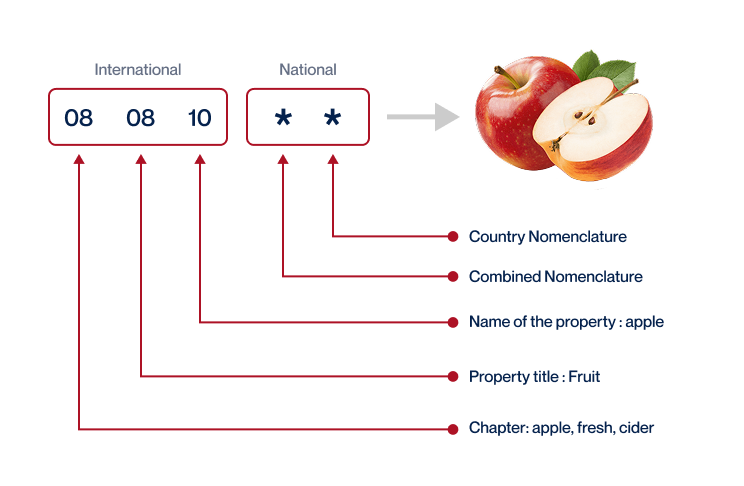
Step 3 – Calculate the Customs Value
In the world of international freight, the customs value holds a different weightage than the price of your product. It’s not just the cost of goods, but a sum of three key components: the price of goods, the cost of international shipping, and insurance cost. This is also known as the CIF value (Cost, Insurance, and Freight). For instance, if your goods cost $500, and it costs $200 for shipping, plus $50 for insurance, the customs value would be $750. You might wonder why this matters. Well, this customs value serves as the basis for calculating customs duty when your goods reach Singapore from Qatar. Understanding this concept eases the customs clearance process, and saves you from any unforeseeable expenses.
Step 4 – Figure out the applicable Import Tariff
An import tariff is essentially the tax imposed by a country’s government on goods being imported from overseas. In Singapore’s context, the import tariff used is the Full Customs Import Duty.
To identify your applicable Import Tariff:
1. Locate your Harmonised System (HS) code – This code that classifies your product in international trade was identified in the prior steps.
2. Visit Singapore’s Custom Authority or use any credible online trade tools available in your region. Enter the HS code and country of origin (Qatar in this case) to find the applicable tariff.
Consider the example of a wooden table classified under HS code 94036000, imported from Qatar with a CIF (Cost, Insurance, Freight) value of $2000. Let’s say the tool shows a tariff rate of 5%. The import duties would be calculated as 5% of the CIF value, which equates to $100 (5% of $2000).
Remember, understanding the import tariff is a fundamental step in reducing unexpected costs and ensuring smoother transit of your goods.
Step 5 – Consider other Import Duties and Taxes
Moving beyond standard tariff rates, your landed cost calculation can sometimes involve a few additional charges. This can vary based on your product’s nature and its country of origin.
Consider the Excise Duty, imposed on certain goods such as alcohol or tobacco. Take, for example, a shipment of wine from Qatar to Singapore. The Excise Duty for wine in Singapore could be around $88/gallon (just an illustrative number, actual figures may vary).
Next, there’s Anti-Dumping Duty. If imported goods are priced so low that they become detrimental to local industries, additional taxes can be levied. For instance, if a homeware product from Qatar is priced significantly lower than a similar product in Singapore, it may attract such a duty.
Lastly, but not least – VAT. In Singapore, the standard Goods and Services Tax (GST) rate is 7%. So, if the CIF (Cost, Insurance, Freight) value of your goods is $2,000, you’ll have an extra $140 on your bill for GST alone.
Remember these costs in your planning, as their omission could result in unforeseen expenses and potential shipping hang-ups. Do thorough product and market research, factoring all duties and taxes into your final cost.
Step 6 – Calculate the Customs Duties
In Step 6, you’ll calculate your customs duties. You start with the Customs Value (CV), often the transaction value of the goods. Duties equal the customs value multiplied by the duty rate. The CV can also include transport-related expenses and insurance fees.
For example, goods with a CV of $5,000 and a 5% duty rate will have duties of $250.
Add Value Added Tax (VAT) – calculated based on the CV plus customs duties. So, if Singapore’s GST is 7%, your $5,000 goods plus $250 in duties amount to $355 in total fees ($250 duties + ($5,2507% GST)).
Lastly, certain goods might attract anti-dumping taxes and excise duties. Let’s assume goods worth $5,000 attract 4% anti-dumping and 10% excise duty plus the 7% GST. Total fees would be $990 ($200 duties + $400 anti-dumping + $340 excise + ($59407% GST)).
Don’t get drowned in calculations – DocShipper can handle your customs clearance anywhere globally, making sure you aren’t overcharged. Get your free quote in less than 24h!
Does DocShipper charge customs fees?
Navigating international shipping can be a maze, but we’re here to clear up confusion. While DocShipper, your reliable customs broker in Qatar and Singapore, does levy a customs clearance fee, we don’t charge customs duties. Why? Customs duties and taxes go straight into government coffers, not ours. You pay those charges directly to the government. Our role? We facilitate the process, handle paperwork and confirm everything’s kosher with customs. Rest easy, you’ll receive all documents from the customs office as proof of all paid charges. We’re here to ensure transparency and efficiency; no hidden costs, just clear shipping.
Contact Details for Customs Authorities
Qatar Customs
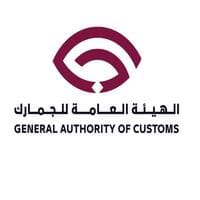
Official name: General Authority of Customs, Qatar Official website: https://www.customs.gov.qa/
Singapore Customs
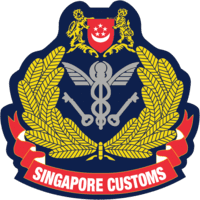
Official Name: Singapore Customs. Official Website: https://www.customs.gov.sg/
Required documents for customs clearance
Overwhelmed by customs paperwork? Buckle up as we simplify the essential documents – Bill of Lading, Packing List, Certificate of Origin, and Documents of Conformity (CE standard). This insight will defog the complex customs clearance maze, making your freight journey smoother. Stay tuned!
Bill of Lading
When shipping goods from Qatar to Singapore, the Bill of Lading (BOL) will be your best friend. This crucial document is the proof of ownership handoff – think of it as a passport for your cargo. It charts the course your shipment takes, and without it, progress grinds to a halt. Migrating to the electronic version, or telex release, reduces any potential snags by speeding up the process while minimizing physical handling. In air cargo scenarios, the Air Waybill (AWB) serves a similar, indispensable role. Practical takeaway? Ensure your Bill of Lading or AWB is error-free to sail smoothly through customs. Any hiccups can lead to delays and amplified costs, so double-check all entries. Invest in digital solutions where possible for swifter, smoother transitions. Happy shipping!
Packing List
With a splash of diligence and a dash of attention to detail, your Packing List can smooth your shipping process between Qatar and Singapore. Think of it as the resume for your goods–detailing their quantity, type and even their weight–giving customs a clear snapshot of what’s inside your shipment. It’s on you, brave shipper, to prepare this document accurately. Misrepresenting your goods? That’s a surefire ticket to customs issues – imagine your eagerly awaited cargo stuck in an enigmatic bureaucratic limbo. Sea or air, it doesn’t discriminate. Leaving out a packing list is like navigate a ship without a compass. It works hand in glove with the Commercial Invoice to ensure your freight costs and customs duties are calculated as accurately as possible – no surprises or unforeseen costs. To paint a picture, imagine you’re shipping 100 car engines – your Packing List helps customs recognize them amidst the ocean of consignments.
Commercial Invoice
Crafting a precise Commercial Invoice, tailor-made for your shipments from Qatar to Singapore, is crucial for smooth customs clearance. It should encapsulate critical details like product description, HS code, shipment value, and quantity. This isn’t just a list—it paints a full picture of what you’re transporting. Remember, accuracy is paramount, any discrepancy between this and other shipping documents can cause hold-ups at customs, increasing your costs and delivery times. Double-checking your Commercial Invoice not only simplifies your clearance process but also aids in the quick release of shipments. Let’s conquer the customs challenge together!
Certificate of Origin
Shipping goods from Qatar to Singapore? Don’t underestimate the value of the Certificate of Origin. This document serves as a passport for your goods, stating their country of manufacture. It plays a critical part in avoiding unnecessary trade ambiguities and could even afford you preferential customs duty rates. Imagine shipping Qatar-originated carpets in large quantities. If accurately labeled, these could enjoy lowered or even zero tariff, boosting your bottom line. Remember, the key is correctly mentioning the country or countries of manufacture. This document is your ally, making your international trading experience smoother, more predictable, and often cheaper.
Get Started with DocShipper
Prohibited and Restricted items when importing into Singapore
Understanding what you can and can’t bring into Singapore might feel like a maze. From crucial business equipment to seemingly innocent souvenirs – some items are just off-limits. Let’s demystify Singapore’s import regulations to avoid potential setbacks.
Are there any trade agreements between Qatar and Singapore?
Yes, a significant trade agreement exists between Qatar and Singapore, the “Singapore Cooperation Council for the Arab States of the Gulf (GCC-Singapore) Free Trade Agreement.” This FTA plays a pivotal role in facilitating smoother and more efficient trade, affecting goods transported between countries. Important developments to watch include the Qatar-Singapore Economic Forum, where further collaborations and strategic alliances are discussed. These discussions could signal potential growth areas and opportunities for your business, especially in the logistics sector.
Qatar – Singapore trade and economic relationship
Situated at the intersection of key global trade routes, Qatar and Singapore have long fostered a vibrant trading relationship. Their economic partnership, dating back to the 1970s, has hurdled significant milestones, such as the Qatar-Singapore Economic Forum in 2017. The key sectors central to this relationship are energy, finance, and transportation. Largely, Qatari liquefied natural gas supplies drive this partnership, thanks to Singapore’s robust energy sector. Investment flows have remained robust through the years.
In 2022, Singapore boasted significant exports to Qatar, including Precious Metals valued at $291 million, Machines at $157 million, and Mineral Products at $38.3 million. Conversely, Qatar’s exports to Singapore in 2022 were dominated by Mineral Products amounting to $3.56 billion, along with Chemical Products at $174 million, and Metals at $79.5 million.
Your first steps with DocShipper
Additional logistics services
Warehousing
Secure warehousing can be a real headache, but not with us. Proper storage with temperature control for delicate items is crucial to protect your goods. We understand these trials and offer reliable solutions tailored to your needs. Dive deeper into our warehousing solutions to ease your load.
Packing
Proper packaging is essential when shipping from Qatar to Singapore. A trustworthy freight forwarder ensures your products - be it electronics or foods - are packed tightly to withstand transit strains. A product shipped in ceramic containers might need repackaging into durable polypropylene bags for safer sea transport. It's about confidence knowing your goods will arrive intact, regardless of their original packaging. This service adapts to you.

Transport Insurance
When moving goods, transport insurance goes beyond the limited protection of fire insurance. It's your best bet in dodging financial hits from unforeseen mishaps like water damage, theft, or even complete loss. Imagine handcrafts damaged in a humid container, or pricey electronics swiped during transit - that’s where cargo insurance steps in, providing that much-needed safety net. Prevent rather than regret, it's that simple.
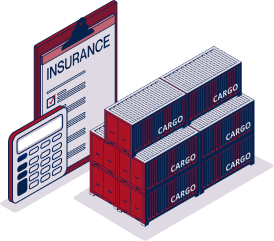
Household goods shipping
Need to ship a grand piano from Doha to Singapore, or your treasured art collection? We got you. Our 'Personal Effects Shipping' ensures those prized possessions get the same VIP treatment you'd give it, every fragile corner, every odd-sized angle, moved with utmost care and adaptability. Picture your bulky chaise lounge delicately handled by pros, flexible to pack and ship, conveying it safely from Qatari sands to a high-rise in Singapore. Fear not, we make it happen.
Procurement in Thailand
Struggling to find reliable suppliers in Asia or Eastern Europe for your Qatar-Singapore route? Let DocShipper turn the tide. Through comprehensive supplier sourcing and procurement management, we bridge language gaps and guide you every step of the way. Real-world example? Sure, imagine knowing every detail, from material sourcing to final dispatch, all under our purview. Time to put the guessing game to rest!

Quality Control
Quality control is a crucial ally when shipping from Qatar to Singapore. Accurate inspections during manufacturing ensure your goods meet Singapore's rigorous standards, helping to bypass any costly hitches at customs. Think about oil-based products - a miss in quality check could result in non-compliant goods, facing costly delays or even rejections at Singapore's port. Effective quality control smoothens your shipping journey.

Conformité des produits aux normes
When it comes to shipping, product compliance is a deal-breaker. Be it from potential fines or a derailed schedule, no one wants a run-in with customs. Our stress-free Product Compliance Services can help by validating your goods against destination regulations. We'll test samples in our lab, securing the certifications needed to ensure a smooth and timely delivery. Think of us as your logistics lifesaver, ironing out bumps in your shipping journey.
